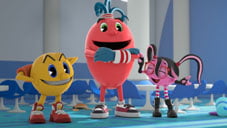“We can already print semiconductors, and one printer prototype I know can already print batteries — if you have batteries and semiconductors, you have devices.”

[Mashable]
…
3D printing is a mind-blowing process, but you might be surprised to learn that it’s not a new technology. It was developed in the late ’80s and has been used extensively for prototyping. What’s new is that the technology is no longer reserved for big companies — in recent years, it has finally made the jump to the mainstream consumer market.
In 2007, some higher-ups at Philips Electronics had a hunch that people would be interested in being more involved in the products they buy. …
Weijmarshausen created a business plan for the first round of seed funding, built a prototype that was ready by February 2008, and launched Shapeways.com in July 2008. At launch, the machines only printed in plastic, but as the market grows and the technology matures, Shapeways is able to offer more materials and more affordable prices. …
How It Works
What Can Be Printed?
To Print or Not To Print?
The Challenges of 3D Printing
The Future of 3D Printing
What’s in store for 3D printing? Weijmarshausen is adamant that it’s not a need-based business, but a want-based one — you don’t need a 3D-printed bikini, but some people like the idea of cocreation and partaking in the design of the things they own. The items have stories behind them and become conversation starters. So for Shapeways, the mission is to spread that gospel. “We keep growing our proposition to make it easier and more accessible for people,” Weijmarshausen explains.
The Shapeways API can be integrated into myriad platforms to print Minecraft and other items. Should it be integrated with Foursquare, you’d be able to print a Foursquare badge. The API will enable the consumer to transform any digital property into a real-life entity, which has exciting implications for future print-outs.
As for the industry as a whole, it’s very much a wild west. “We just got started, we don’t really know what we can do — it’s like the early Internet years, when we couldn’t imagine web browsing or Facebook or Twitter orSkype,” says Weijmarshausen. “We’ll get more exciting materials, we’ll get a mix-up of materials. We can already print semiconductors, and one printer prototype I know can already print batteries — if you have batteries and semiconductors, you have devices.”
Though there are current limitations, a burgeoning 3D-printing industry can let imaginations run wild in the years to come.
“A lot of things — even things we don’t know and that aren’t yet possible — will be 3D printed.”
Read the full post here: http://mashable.com/2012/02/28/3d-printing-shapeways/


